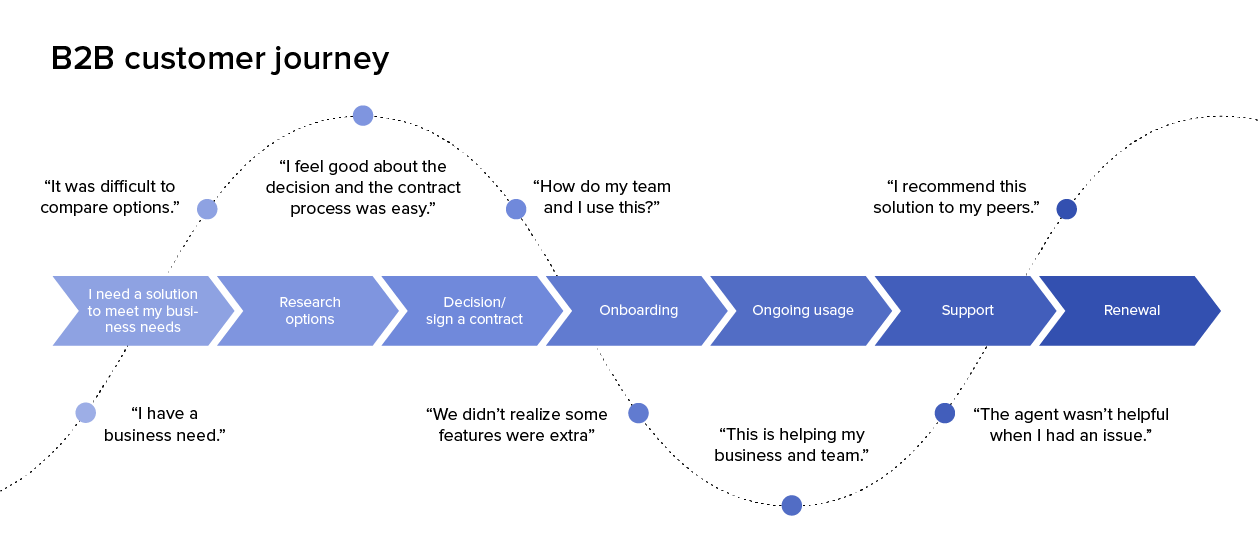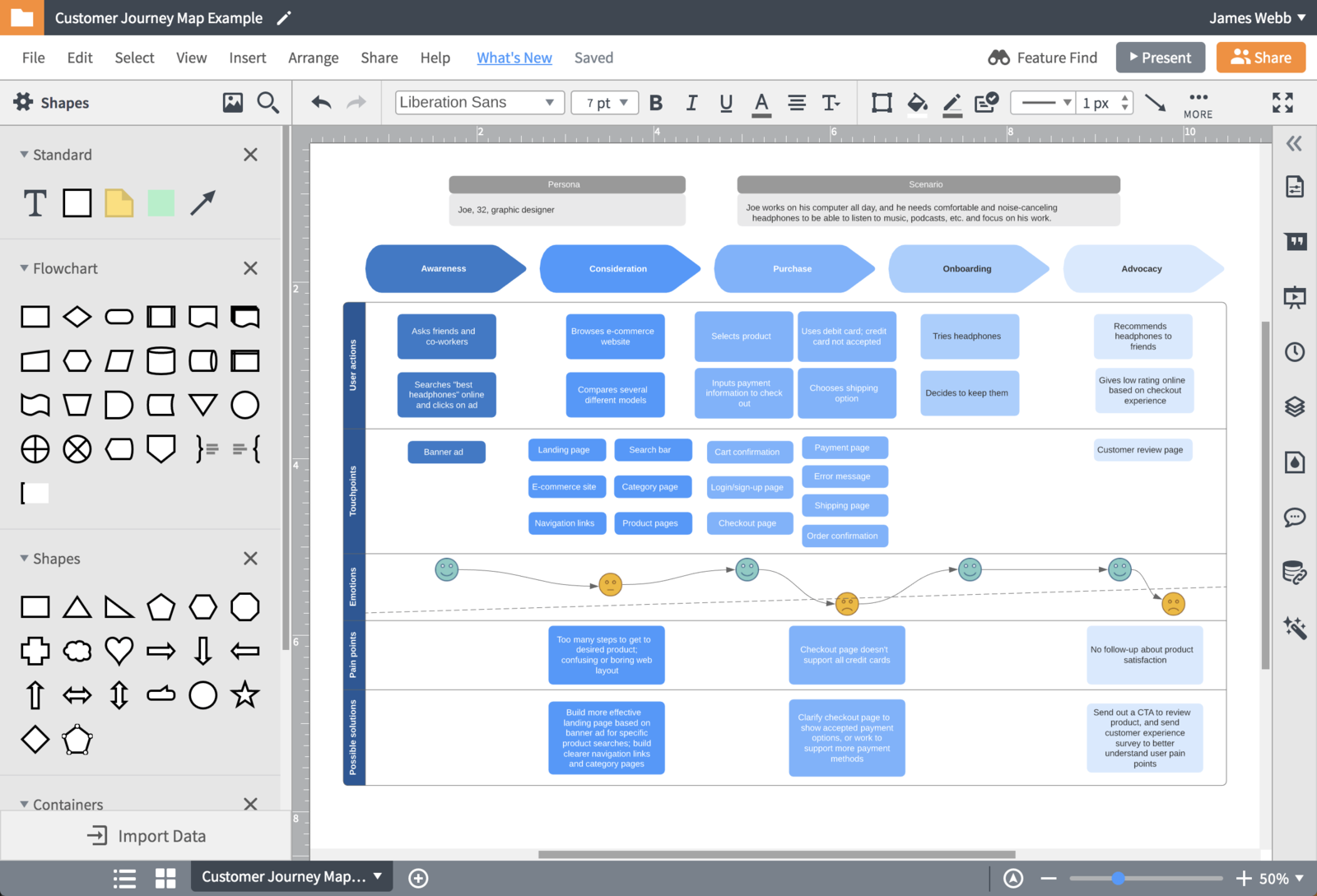The Role of Customer Journey Mapping in Crafting Effective Case Studies
Meta Description: Discover how customer journey mapping can enhance the quality of your case studies. Learn actionable techniques and insights to create compelling narratives that resonate with your audience.
In today's fast-paced business landscape, understanding your customer's journey is more crucial than ever. This is especially true when it comes to crafting compelling case studies that not only showcase success stories but also build credibility and trust with your audience. In this blog, we will delve into the critical role that customer journey mapping plays in developing effective case studies, providing valuable insights and practical tips for marketers, sales teams, and content creators alike.
Meet Viktor Novotny, an SEO expert with over 5 years of experience optimizing digital strategies for various businesses. His work has helped more than 20 companies improve customer engagement through effective content strategies and case studies.
Understanding Customer Journey Mapping
What is Customer Journey Mapping?
Customer journey mapping is a strategic approach to visualizing the process that customers go through when interacting with a brand. It helps businesses understand how customers perceive their experiences across various touchpoints, from initial awareness to post-purchase behavior.

Stages of the Customer Journey
The customer journey typically comprises four main stages:
- Awareness: Potential customers first learn about your product or service.
- Consideration: They research and evaluate options, weighing the benefits and drawbacks.
- Decision: Customers choose whether to purchase based on the information gathered.
- Retention: After the purchase, the focus shifts to maintaining customer satisfaction and encouraging repeat business.
Importance of Customer Journey Mapping in Marketing
Statistics underline the value of customer journey mapping, illustrating its impact on business metrics. Studies show that companies excelling at customer experience see retention rates of 65% compared to just 37% for those that neglect customer engagement practices (Source: McKinsey & Company). Furthermore, businesses employing customer journey mapping techniques can witness up to a 40% increase in conversion rates (Source: Forrester Research). These impressive figures speak volumes about the transformative power of understanding customer interactions.
Real-World Case Studies
Example 1: SaaS Company Success
Consider a SaaS company that leveraged customer journey mapping to identify potential friction points during their onboarding process. By addressing these issues, they achieved a 30% reduction in churn within a mere six months. This resulted not only in increased user satisfaction but also improved rental margins.
Example 2: Retail Brand's Email Engagement
Another noteworthy case involved a retail brand that used journey mapping to segment customers based on where they were in their shopping journey. By tailoring their email communication to these segments, the company experienced a 25% spike in holiday sales, significantly enhancing their overall marketing strategy.
Tools for Customer Journey Mapping
A variety of tools are available to aid organizations in creating effective customer journey maps, including:
| Tool Name | Key Features | Pros | Cons |
|---|---|---|---|
| Lucidchart | Diagram creation and collaboration | Intuitive interface  |
Limited free version |
| Microsoft Visio | Comprehensive visual tools | Integrates well with other Microsoft apps | Can be complex for beginners |
| Smaply | Journey mapping templates | User-friendly; good for workshops | Pricing can be high |
| Miro | Visual collaboration and brainstorming platforms | Real-time collaboration | May lack advanced mapping features |
Each of these tools offers unique advantages, allowing professionals to select the best fit for their needs.
Frameworks and Models for Customer Journey Mapping
Several frameworks and models can guide businesses in their journey mapping efforts. Two particularly effective models include:
AIDA Model: This classic marketing model stands for Attention, Interest, Desire, and Action, outlining how to engage customers effectively from awareness to purchase.

Customer Experience Lifecycle: This framework provides a comprehensive view of the various stages customers go through, enabling organizations to tailor experiences for each phase.
Integrating Customer Insights into Case Studies
Once you've established a clear customer journey, it's time to weave these insights into compelling case studies. Here are some actionable tips on effectively combining journey insights into your narratives:
Highlight Specific Touchpoints
Transform touchpoints along the customer journey into engaging stories. Share testimonials or case experiences that illuminate the customer perspective.
Leverage Qualitative & Quantitative Data
Utilize both qualitative data (gathered from customer interviews and feedback) and quantitative data (such as surveys and analytics) to craft a balanced case study. This approach will give you a comprehensive understanding of customer interactions before, during, and after their engagement with your brand.
Current Trends in Customer Experience
Understanding trends in customer experience can enrich your case studies. For instance, it's noteworthy that 72% of consumers only engage with personalized messaging (Source: HubSpot), pushing marketers towards more tailored content based on journey mapping insights. Additionally, an increasing dependency on data-driven marketing strategies showcases how customer journey mapping can facilitate informed decision-making.
Common Pitfalls in Customer Journey Mapping
While customer journey mapping holds immense potential, there are pitfalls to avoid:
Over-Reliance on Internal Data: Focusing too heavily on internal data can skew your understanding of customer behavior. Incorporate feedback directly from customers to ensure a well-rounded perspective.
Neglecting the Retention Stage: Many businesses overlook the importance of customer retention in their mapping processes. Engaging your customers post-purchase is vital for repeat business and long-term loyalty.
Conclusion
Customer journey mapping is a powerful tool that can significantly enhance the quality and effectiveness of your case studies. By understanding the nuances of your customers' experiences, you can craft narratives that resonate deeply and showcase genuine value.
Now that you possess actionable insights about integrating customer journey mapping with case studies, it's time to take action. Start by mapping your customer journeys and identifying key insights that can inform and elevate your case studies. If you want to continue the conversation or explore related topics, consider signing up for our newsletter or checking out our additional resources on customer experience strategies!
